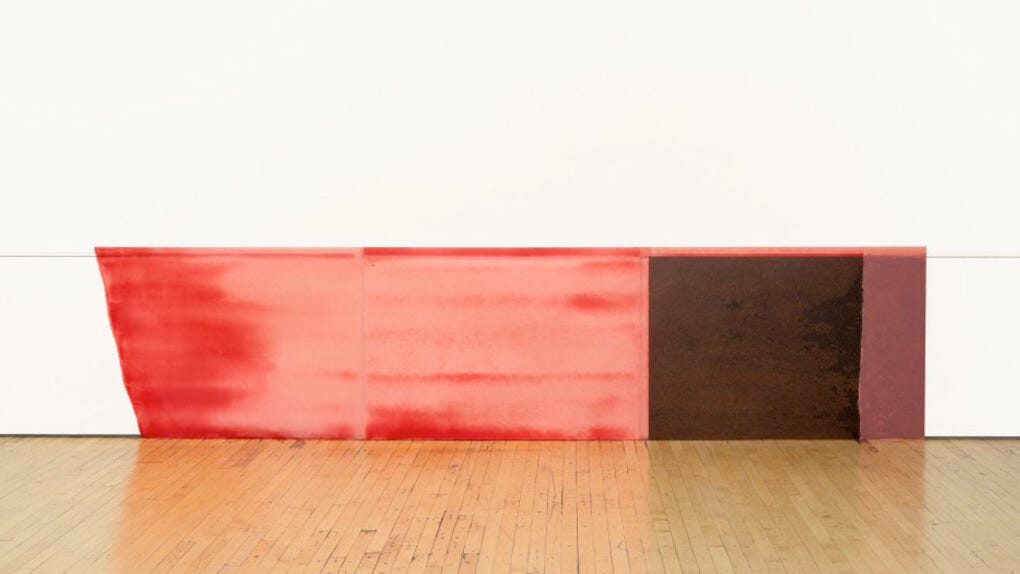Datum line: a fixed line above or below which measurements refer. for example sea level, one is either above or below it.
Domain variable: a set of values produced from a decision variable which is known as its domain which has a lower and an upper boundary. The domain of the variable contains the values from the lower bound to the upper bound.
A decision is made to follow certain rules: a variable, which comes with the boundaries of that decision.
1.
As an artist, some of Dorothea Rockburne’s decisions were made fairly early: paper, charcoal, industrial paints, oils and greases, sheet plastic, plus a fascination with mathematics, plus all the ordinary tools of the artist: chisels, printing presses, brushes.
Rockburne, born in 1932 and with a very long active, interdisciplinary and experimental career, is still with us. Domain of the Variable (Y), (X), 2024 has recently opened at the Bernheim Gallery in London. The original Domain of the Variable (Y), (X) was made in 1972, then revised for the Dia Foundation in 2018.
As I understand it, many of the original pieces, and probably the contemporary ones, are unstable: acidic oils on paper, on plastic which shrinks, industrial skins on metal which part and peel. Each work follows an individual developmental track, collectively they make up the domain.
The individual pieces themselves are material explorations of some mathematical base: vectors, tangents, geometries, set theory, which are subjected to considerable violence: two sheets of chipboard are glued together then separated, imperfectly, each chipboard surface giving chunks of itself to the other. Part of the long red piece is paper nailed to the wall, painted with a red lube oil which gradually fades to ochre.
The particular 1972 lube oil is no longer made, but clearly the red colour was important to Rockburne, as the present revision is, again, red, and again will fade. So there are interventions in the conceptual, process-driven variables. Entropy, as a material condition is accounted for.
Now, all this aside, and there are many reviews of Domain of the Variable, what interests me is the datum line that organises the domain. From the images it appears to be perhaps a metre high. When Domain of the Variable (Y), (X) was installed at Dia, the line was chiselled into the wall — a v-shaped incision which locates work either above or below it, divides some pieces literally, cutting them in two, and provides a register for the collection of such disparate variables.
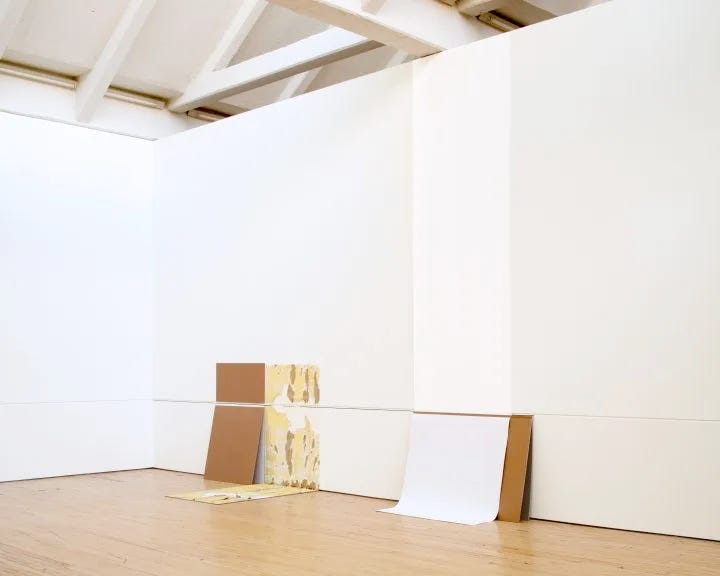
The installation at Bernheim in London is not an incision, instead it is a charcoal line drawn on the gallery walls. Adrian Searle describes it as ‘fine charcoal powder and fixative … regular, unvarying and relentless, it sometimes leaves a breathy residue on the wall or a build-up of fine graphite dust in the corners and crevices of a window frame as it passes.’ This version of the datum line is a conceptual and a material participant in the placement of each individual piece within the specific architecture of the gallery. It is a temporal and spatial artwork in its own right. I’m an architect. I find this very moving.
2.
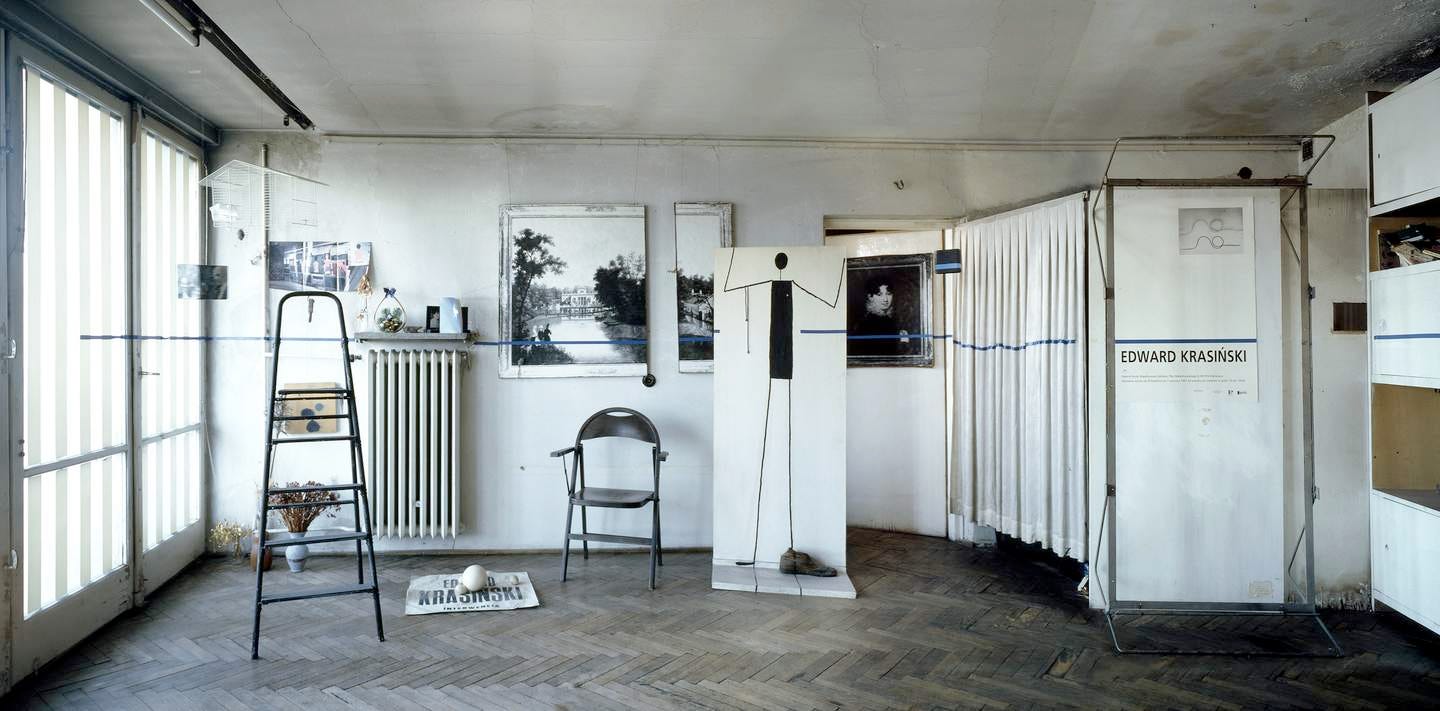
In the early 1960s, Poland mandated that studios be included in the construction of new housing blocks; its Artists Association assigned the studios to practising artists. One such established artist was the constructivist artist and writer Henryk Stażewski (considered a critical member of the Polish postwar avant-garde), who was given a Warsaw 120m2 studio in 1962. From 1968 this studio was shared with Edward Krasiński, and when Stażewski died in 1988, Krasiński, blue-taped a 130cm high datum line throughout it. The studio was exhibited in 1989 and the management of the apartment since Krasiński’s death in 2004 has been by the Foksal Gallery Foundation, Warsaw. Must say I find Henryk Stażewski’s work much more compelling than that of Krasiński, who although mentored early in his career by Stażewski, considered himself a surrealist first, something that in hindsight does not have the passionate political fervour of interwar constructivism and abstraction.
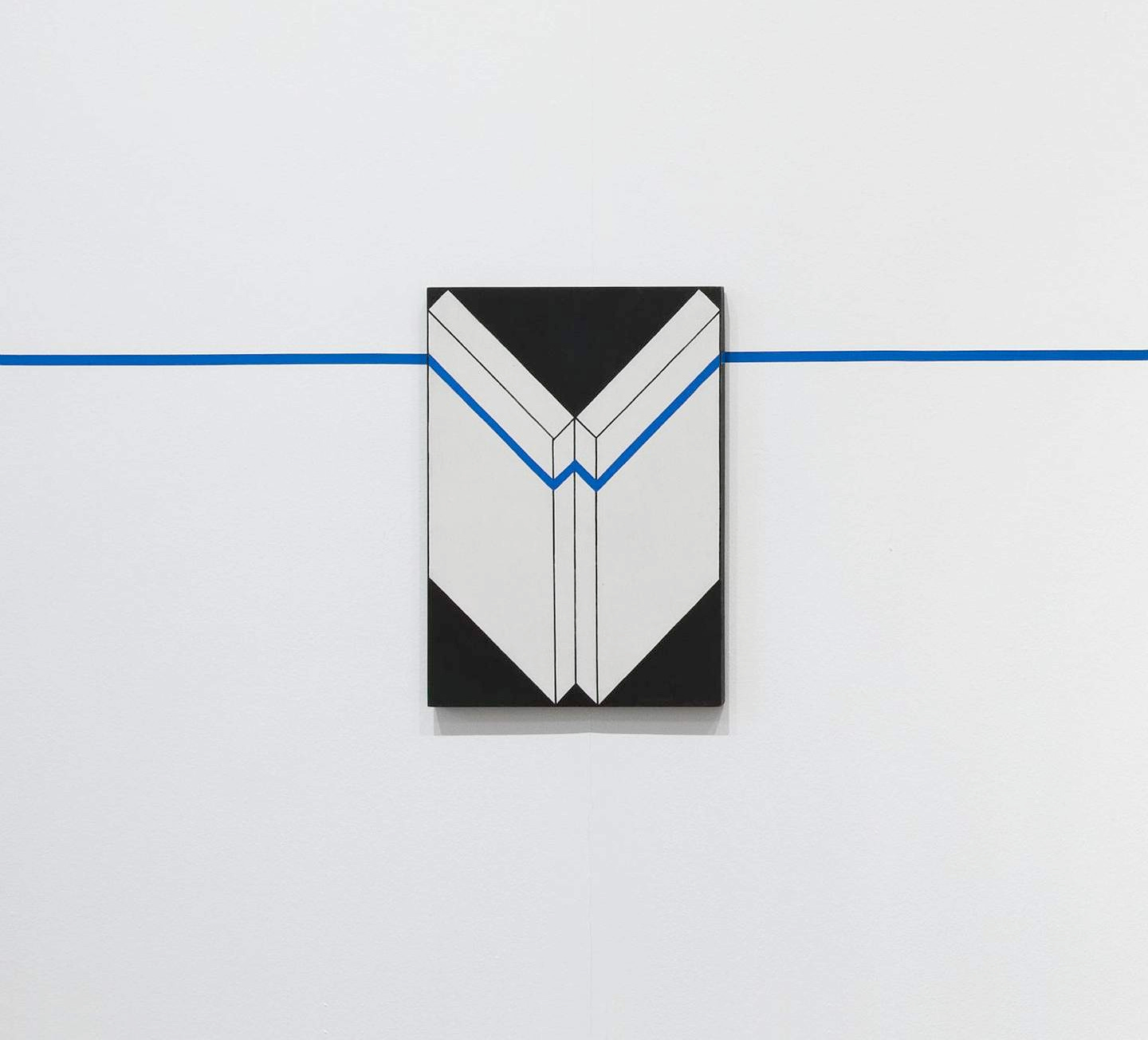
Krasiński seems to have engaged with a trompe-l’oeil surrealism for most of his career: tricks of the eye that lead one to question the visual space and surface of the gallery wall. Rather than the optical space that traditionally opens up behind the surface of a painting, Krasiński’s axonometric projections thrust themselves into the front of the surface. Because the datum line, always painters’ blue masking tape, is bent, and we trust it because it is a datum line, flat lines on flat canvases leap into three dimensions. The Z variable.
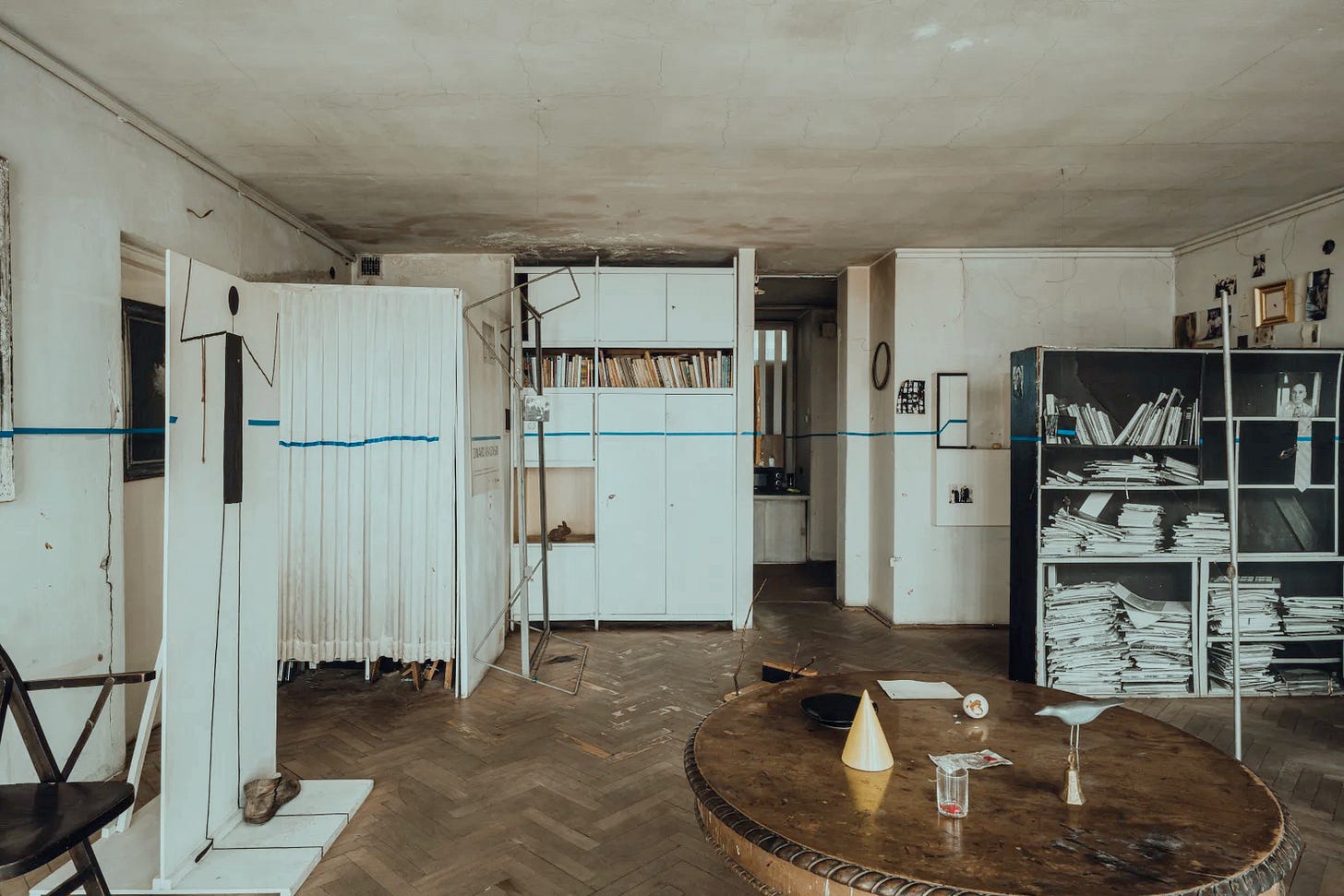
Krasiński’s blue taping of Stażewski’s studio is quite emotional. A layer of perception is added that connects disparate objects from walls to curtains, to photographs. Rockburne’s datum line connects as it divides; division is not active in Krasiński, rather it establishes a horizon of things. Krasiński’s 130cm high datum, he said, was at the level of the human heart, more or less. This statement alone allows us to depart from the process and its rules to something else.







